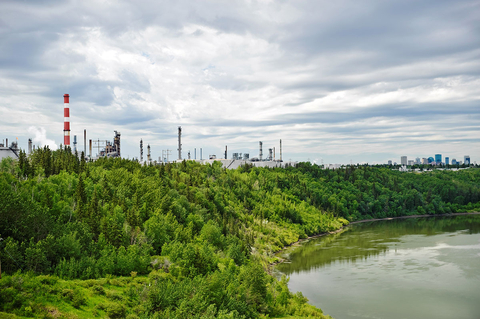Imperial to produce renewable diesel at Strathcona refinery
-
Strathcona project will leverage hydrogen produced with carbon capture and storage technology to helpCanada meet low-carbon fuel standards. - Facility could produce about 20,000 barrels, or 3 million litres of renewable diesel, per day in 2024.
- Renewable diesel has the potential to reduce annual CO2 emissions by about 3 million tonnes compared to conventional fuels.
-
The Government of
British Columbia has entered into an agreement with Imperial on this project under Part 3 of its low-carbon fuel legislation.

“Imperial is excited to announce our plan to build the largest renewable diesel manufacturing facility in Canada,” said
Renewable diesel production will source blue hydrogen (hydrogen produced from natural gas with carbon capture and storage) to substantially reduce greenhouse gas emissions relative to conventional hydrogen production. Approximately 500,000 tonnes of CO2 are expected to be captured annually. The blue hydrogen and biofeedstock will be combined with a proprietary catalyst to produce premium low-carbon diesel fuel.
Imperial is currently in partnership discussions with government and industry, including the Government of
A final investment decision will be based on several factors, including government support and approvals, market conditions and economic competitiveness. The project is expected to create about 600 direct construction jobs, along with hundreds more through investments by our business partners. Renewable diesel production is anticipated to start in 2024.
Third-party studies have shown renewable diesel from various non-petroleum feedstocks can provide life-cycle greenhouse gas emissions reductions of approximately 40 percent to 80 percent compared to petroleum-based diesel. The reduction of 3 million tonnes of greenhouse gases is estimated to be the equivalent to taking more than 650,000 passenger vehicles off the road for one year.
Today’s announcement builds on Imperial’s commitment to reducing emissions. In June, Imperial announced its participation as a founding member of the Oil Sands Pathways to
This investment at the
Cautionary statement: Statements of future events or conditions in this release, including projections, targets, expectations, estimates, and business plans are forward-looking statements. Forward-looking statements in this release include, but are not limited to, the company’s plans to construct a renewable diesel facility at
Forward-looking statements are based on the company's current expectations, estimates, projections and assumptions at the time the statements are made. Actual future financial and operating results, including expectations and assumptions concerning refinery utilization, energy use and greenhouse gas emissions; demand growth and energy source, supply and demand mix; general market conditions; commodity prices; the company’s ability to effectively execute on its project plans and operate the refinery and cogeneration unit; progression of COVID-19 and its impacts on Imperial’s ability to operate its assets, including the possible shutdown of facilities due to COVID-19 outbreaks; the company’s ability to effectively execute on its business continuity plans; the adoption and impact of new facilities or technologies, including on reductions to greenhouse gas emissions intensity; the availability of locally sourced and grown feedstock; applicable laws and government policies and actions, including climate change and restrictions in response to COVID-19; and capital and environmental expenditures could differ materially depending on a number of factors. These factors include global, regional or local changes in supply and demand for oil, natural gas, and petroleum products and resulting price, differential and margin impacts; environmental regulation, including climate change and greenhouse gas regulation and changes to such regulation; general economic conditions; political or regulatory events, including changes in law or government policy such as actions in response to COVID-19; availability and performance of third-party service providers; unanticipated technical or operational difficulties; management effectiveness and disaster response preparedness, including business continuity plans in response to COVID-19; unexpected technological developments; operational hazards and risks; cybersecurity incidents; and other factors discussed in Item 1A risk factors and Item 7 management’s discussion and analysis of financial condition and results of operations of Imperial’s most recent annual report on Form 10-K and subsequent interim reports of Form 10-Q.
Forward-looking statements are not guarantees of future performance and involve a number of risks and uncertainties, some that are similar to other oil and gas companies and some that are unique to
After more than a century, Imperial continues to be an industry leader in applying technology and innovation to responsibly develop Canada’s energy resources. As Canada’s largest petroleum refiner, a major producer of crude oil, a key petrochemical producer and a leading fuels marketer from coast to coast, our company remains committed to high standards across all areas of our business.
View source version on businesswire.com: https://www.businesswire.com/news/home/20210825005107/en/
Investor relations
(587) 476-4743
Media relations
(587) 476-7010
Source: Imperial






